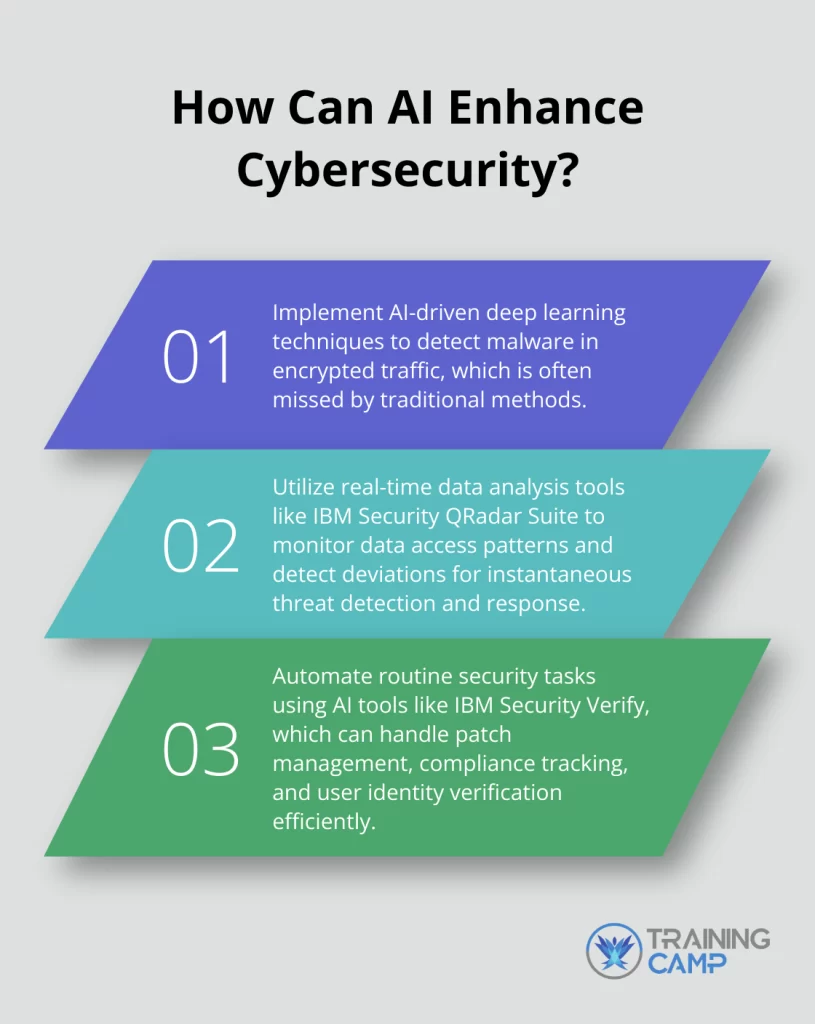Latest News on AI-Based Cyber Attacks and Defense
Artificial Intelligence (AI) is transforming many areas of our lives, from healthcare to entertainment. However, it also brings new challenges, particularly in cybersecurity. In recent months, AI-based cyber attacks have become a significant concern. Let’s dive into the latest news on these attacks and how we are defending against them.
Rise of AI-Based Cyber Attacks
AI has made cyber attacks more sophisticated and harder to detect. Attackers now use AI to create more convincing phishing emails, develop malware that adapts to different systems, and automate attacks on a massive scale. These advancements mean that traditional security measures might not be enough.
For instance, AI can analyze vast amounts of data quickly, allowing attackers to identify vulnerabilities in systems more efficiently. This ability to learn and adapt means that AI-driven attacks can evolve as defenses change. For example, AI can generate fake websites that look almost identical to legitimate ones, tricking users into giving away their personal information.
Another worrisome development is the use of AI in creating deepfakes—hyper-realistic fake videos or audio recordings. These can be used to impersonate individuals, spread misinformation, or damage reputations. As AI technology improves, these deepfakes become increasingly difficult to distinguish from real content.
Examples of Recent AI-Based Attacks
Recent headlines have highlighted some notable AI-based attacks. In 2024, a sophisticated phishing campaign used AI to craft emails that appeared to come from trusted sources like banks or corporate partners. The AI analyzed previous interactions and generated messages that were highly personalized, making them more likely to deceive recipients.
Another example is the rise of AI-driven ransomware attacks. In these incidents, AI is used to scan for vulnerabilities in systems and deploy ransomware that encrypts data and demands a ransom. These attacks are more efficient because the AI can find and exploit weaknesses faster than human attackers.
How AI Enhances Cyber Defense

Despite the threats posed by AI-based attacks, the same technology is also being used to enhance cyber defenses. AI can help organizations detect and respond to threats more quickly. For instance, AI-powered security systems can monitor network traffic in real-time, identifying unusual patterns that might indicate an attack.
One way AI helps in defense is through threat intelligence. AI systems can analyze data from various sources to predict potential attacks and identify emerging threats. This proactive approach allows organizations to strengthen their defenses before an attack occurs.
AI is also used in automating responses to cyber incidents. When an attack is detected, AI systems can take immediate actions, such as isolating affected systems or blocking malicious traffic. This rapid response minimizes damage and reduces the need for manual intervention.
The Role of AI in Automated Threat Detection
Automated threat detection is a key area where AI is making a difference. Traditional security systems often rely on known signatures or patterns of malicious activity. However, AI can recognize new and unknown threats by analyzing behavioral patterns and anomalies.
For example, AI algorithms can detect deviations from normal user behavior, such as unusual login times or access to sensitive files. When such anomalies are detected, the system can raise alerts or take automated actions to prevent potential breaches.
Machine learning, a subset of AI, is particularly effective in this area. Machine learning models are trained on large datasets to recognize patterns and make predictions. In the context of cybersecurity, these models can identify suspicious activities and differentiate between legitimate and malicious actions.
Challenges in AI-Based Cyber Defense
While AI offers many benefits for cybersecurity, it also presents challenges. One major challenge is the potential for AI systems to be biased. If an AI system is trained on biased data, it may make incorrect predictions or miss certain threats.
Another challenge is the complexity of AI systems. Implementing and managing AI-based defenses requires specialized skills and knowledge. Organizations may struggle to find or develop the necessary expertise, which can hinder their ability to effectively use AI for cybersecurity.
Moreover, as AI technology evolves, so do the tactics of cybercriminals. This ongoing arms race means that defenses need to continuously adapt to keep up with new threats. Organizations must invest in regular updates and training to stay ahead of attackers.
Future Directions in AI-Based Cybersecurity
Looking ahead, several trends are likely to shape the future of AI-based cybersecurity. One trend is the increasing use of AI for threat hunting. Threat hunting involves proactively searching for signs of potential attacks rather than waiting for alerts. AI can assist in this process by analyzing large volumes of data and identifying subtle indicators of compromise.
Another trend is the integration of AI with other technologies, such as blockchain. Blockchain’s decentralized nature can complement AI’s capabilities by providing a secure and transparent way to manage data and transactions.
There is also a growing focus on ethical AI. Ensuring that AI systems are designed and used responsibly is crucial to preventing misuse and ensuring that they enhance rather than undermine security.
Conclusion
AI-based cyber attacks and defenses are evolving rapidly, presenting both opportunities and challenges. While AI has made it easier for attackers to execute sophisticated attacks, it also provides powerful tools for defending against them. Organizations must stay vigilant and invest in advanced AI-based security measures to protect against emerging threats. As technology continues to advance, maintaining a proactive and adaptive approach to cybersecurity will be essential for staying one step ahead of cybercriminals.



